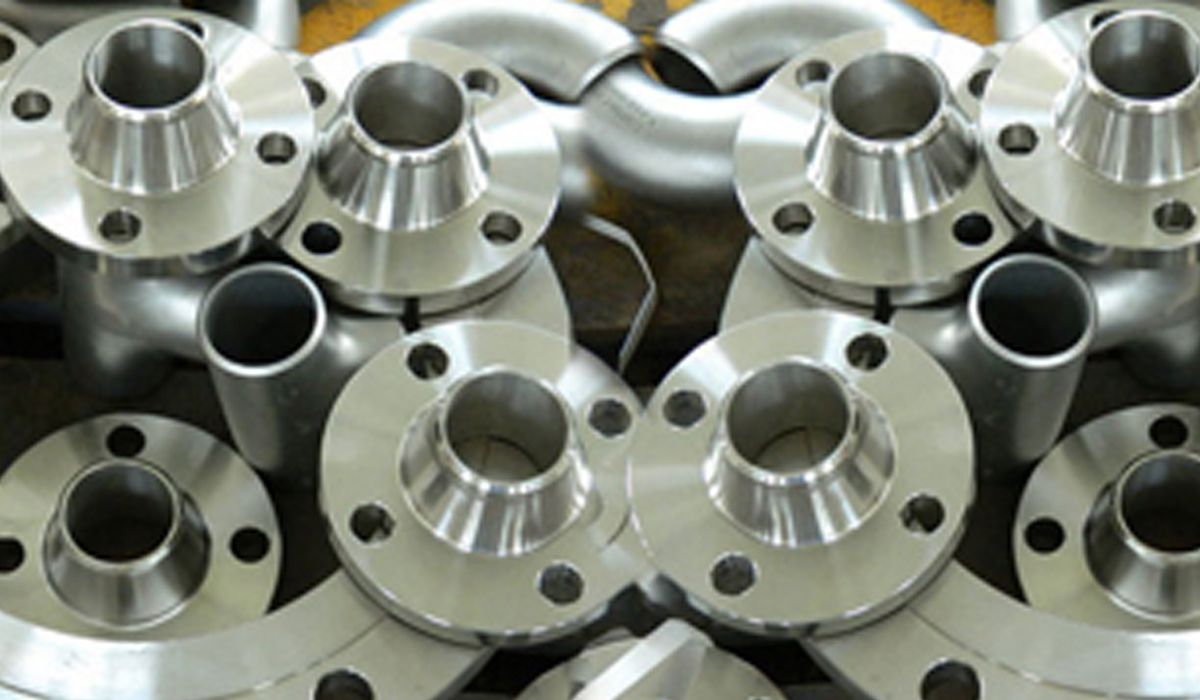Monel 400 is a highly versatile nickel-copper alloy known for its exceptional corrosion resistance, strength, and durability. These properties make Monel 400 an excellent choice for flanges used in various industries, including marine, chemical, oil and gas, and power generation. In this article, we’ll explore the different types of Monel 400 flanges, their unique characteristics, and their specific applications.
Types of Monel 400 Flanges
Monel 400 flanges are manufactured in various designs to meet the diverse requirements of industrial piping systems. Here are the most commonly used types:
1. Weld Neck Flanges
Weld neck flanges are characterized by their long tapered hub, which is welded to the pipe. This design ensures a smooth transition between the flange and the pipe, reducing stress concentration and providing excellent strength.
Applications:
- High-pressure systems.
- High-temperature environments.
- Critical applications in oil and gas, chemical, and power plants.
2. Slip-On Flanges
Slip-on flanges are designed to slip over the pipe and are welded on both the inside and outside to ensure a secure connection. They are easier to install compared to weld neck flanges and are ideal for lower-pressure applications.
Applications:
- Low-pressure piping systems.
- Applications where quick installation is required.
- General-purpose industrial use.
3. Socket Weld Flanges
Socket weld flanges feature a socket where the pipe is inserted before being welded. This design ensures a strong and leak-proof connection, making it suitable for small-diameter and high-pressure systems.
Applications:
- High-pressure piping systems with small diameters.
- Petrochemical and chemical processing.
- Power generation systems.
4. Blind Flanges
Blind flanges are used to close the ends of piping systems, acting as a seal. They have no opening for fluids to pass through and are typically used in systems that require maintenance or expansion.
Applications:
- Temporary or permanent closure of piping systems.
- Maintenance access in pipelines.
- Pressure vessel openings.
5. Threaded Flanges
Threaded flanges are designed with a threaded bore that allows them to be screwed onto the pipe without welding. These flanges are suitable for low-pressure applications and systems where welding is not feasible.
Applications:
- Low-pressure piping systems.
- Applications requiring easy assembly and disassembly.
- Piping systems in hazardous environments where welding is not allowed.
6. Lap Joint Flanges
Lap joint flanges are used in conjunction with a stub end, which is welded to the pipe. The flange itself is not welded, allowing for easy assembly and alignment. This design reduces stress on the pipe and simplifies installation.
Applications:
- Piping systems requiring frequent disassembly.
- Systems with limited space for installation.
- Low-pressure and non-critical applications.
7. Orifice Flanges
Orifice flanges are used with orifice meters to measure the flow of fluids in a piping system. They are equipped with pressure taps for easy access to measurement instruments.
Applications:
- Flow measurement in pipelines.
- Applications in oil and gas, petrochemical, and chemical industries.
- Systems requiring precise flow monitoring.
Key Advantages of Monel 400 Flanges
Regardless of the type, Monel 400 flanges offer several advantages, including:
- Corrosion Resistance: Superior resistance to seawater, acids, and alkalis.
- Strength and Durability: Excellent mechanical properties under high pressure and temperature.
- Versatility: Suitable for a wide range of industrial applications.
- Longevity: Reduced maintenance and replacement costs due to their durability.





Comments